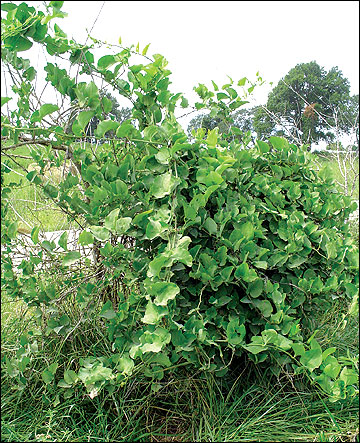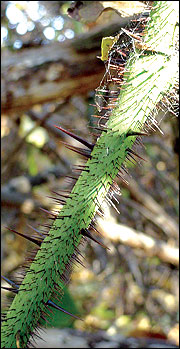Greenbrier
- Smilax spp.
- Bullbrier, Catbrier, Carrion flower, Horsebrier, Wild sarsaparilla
Woody
 Dense tangles of greenbrier provide good escape cover for bobwhites and nesting habitat for many other species.
Dense tangles of greenbrier provide good escape cover for bobwhites and nesting habitat for many other species.
Scott Sudkamp, Missouri Department of Conservation
Description
Greenbriers are numerous and widely encountered throughout the Midwest, occurring in low woods in valleys and thickets, along stream banks, on rich wooded slopes, and along roadsides and fencerows. They grow as stout vines, climbing with the aid of tendrils that arise in pairs at the base of leaf stalks. The flowers are small and green and grow in clusters of 5 to 26 flowers on long stalks. Fruits ripen in early fall. Stems are often densely covered with black thorns that can be up to 1/2 inch long.
Use by bobwhites
Bobwhites readily eat the seeds of greenbrier. In its sprawling habit, bristly greenbrier forms an impenetrable mass of branches that provide good escape cover.




